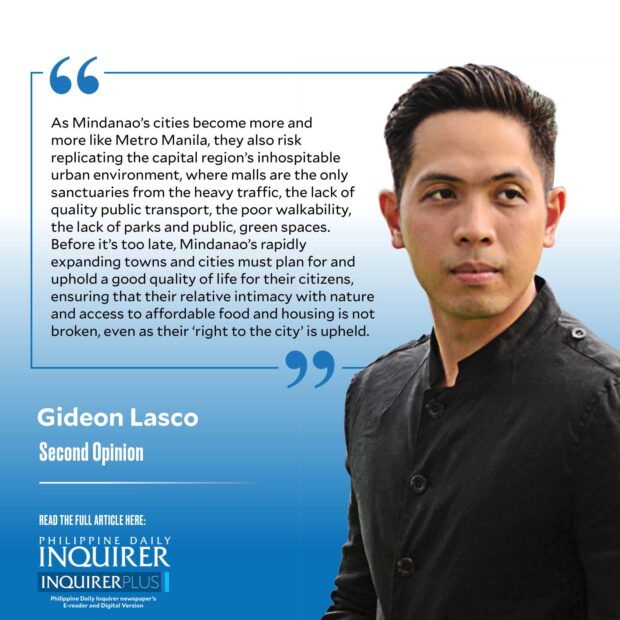Mount Kampalili, Davao De Oro—“You must ride at the same time,” the “skylab” driver told me and my friend Niel Dagondon as we prepared to board the wooden “katig” (outrigger) on each side of his vehicle. And then he added, as Tina Corpuz, our teammate, looked on from the relatively more comfortable seat behind him: “If either of you falls, we all fall.”
We had just arrived in the town of Maragusan to climb the fabled, 2,320-meter Mount Kampalili—one of the three great mountains in Davao de Oro province alongside the two that I had already climbed in the past: Mount Candalaga and Mount Pandadagsaan. I have been on board many such vehicles, also known as “habal-habal,” in the past en route to various mountains (skylab is an allusion to the vintage space station with its solar panels). But riding on the katig itself (another moniker for the whole vehicle) turned out to be an even more thrilling (or terrifying) experience.
The ensuing ride through banana plantations took 1.5 hours and there were descents through steep, rough roads when I was hanging on to dear life. Even so, it was not as precarious as the rides I experienced in the past (see “‘Habal-habal’ dreaming,” 9/23/15), partly because parts of the road to Sitio Kaluyapi, the starting point of the hike, were already cemented. Even just a few years ago, a hike up Mount Kampalili, if at all possible due to security issues (Kaluyapi’s residents had to “bakwit” in 2018), would have taken four or five days from Davao City, but owing to improved road conditions it is now possible to do it in two or three.
This brings me to a point I have been ruminating in the past two weeks I’ve been in Mindanao: The socioeconomic transformation of this vast island, larger than Ireland or Taiwan, over the past decade. From cosmopolitanism of its cities (with excellent cafés serving Mount Apo or Bukidnon coffee and the smartphone-based conveniences) to the digitalization of its farthest sitios (there is no signal in Sitio Kaluyapi but there’s “piso Wi-Fi” and many have a Facebook account), change has come in many ways.
But such progress faces headwinds. As Mindanao’s cities become more and more like Metro Manila, they also risk replicating the capital region’s inhospitable urban environment, where malls are the only sanctuaries from the heavy traffic, the lack of quality public transport, the poor walkability, the lack of parks and public, green spaces. Before it’s too late, Mindanao’s rapidly expanding towns and cities must plan for and uphold a good quality of life for their citizens, ensuring that their relative intimacy with nature and access to affordable food and housing is not broken, even as their “right to the city” is upheld.
Another caveat is the uneven terrain of this change. When I asked the sitio leaders in Kaluyapi what they wished for, they were unanimous in their response: first, for the road to be completed and second, for a bridge to be built, given that the 1.5-hour ride to town is still too long and precarious on a daily basis, especially when heavy rains make the road all but inaccessible.
The third item on their wish list—“for a medical mission”—speaks of how health care remains inaccessible for many Filipinos, a majority of whom remain one sickness away from impoverishment. I should add, as a medical doctor, that there are environmental health hazards that people may not recognize as such (or recognize but not avoid), for instance, as the anthropologist Alyssa Paredes reminds us, the aerially sprayed fungicides in the region’s banana plantations. It is heartening that more people in Mindanao have food on the table (as my colleague Mahar Mangahas reports from the latest Social Weather Stations survey, severe hunger fell sharply from 2.3 to 0.3 percent in Mindanao, even as it rose from 1.0 to 3.7 percent in NCR (“Hunger is very stubborn,” Social Climate, 8/5/23)). It is also most welcome that more and more areas are becoming free from violence and armed conflict. But improving quality of life is Mindanao’s present and future challenge, alongside making its developmental gains equitable across its regions and peoples: “lumads,” Muslims, and Christians.
Meanwhile, camped in this mountain, where nights are made magical by innumerable stars and fireflies, and where the days are made enchanted by mossy forests and limestone cliffs, I am also reminded that in as much as Mindanao is culturally diverse, it is made even more so by other species—from pitcher plants and to ever-dwindling Philippine eagles—even as these species and their habitats are threatened by destructive projects like Tampakan. A balancing act with environmental conservation is imperative as Mindanao (and the rest of the country) pursues a course of development that only the willfully ignorant would term sustainable.
Like two sides of a skylab, our fate is bound with nature and we either stand or fall together.
—————-
glasco@inquirer.com.ph


